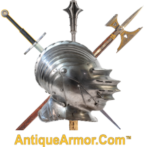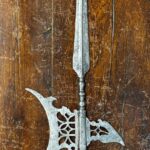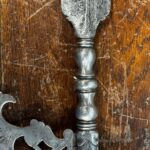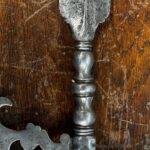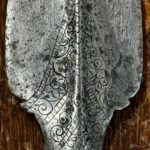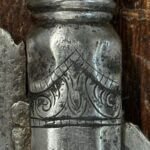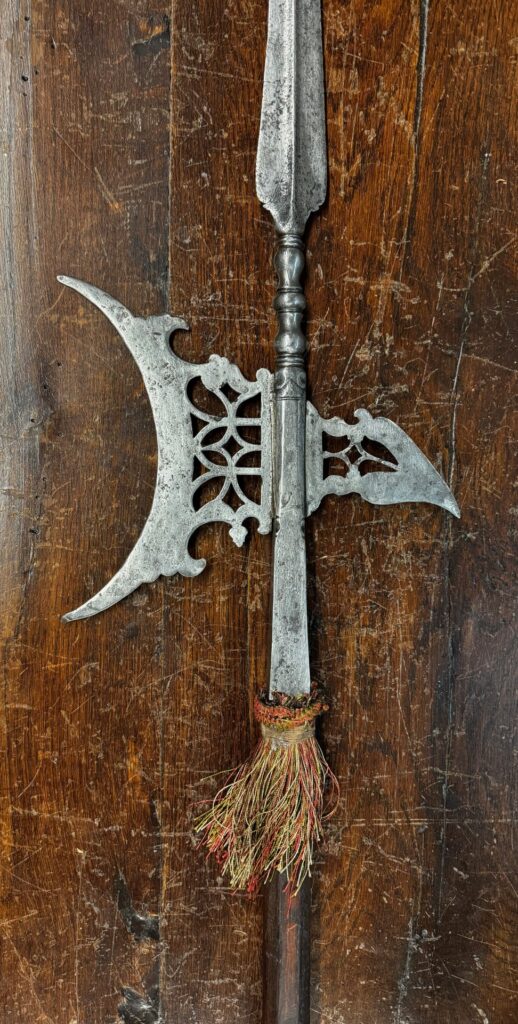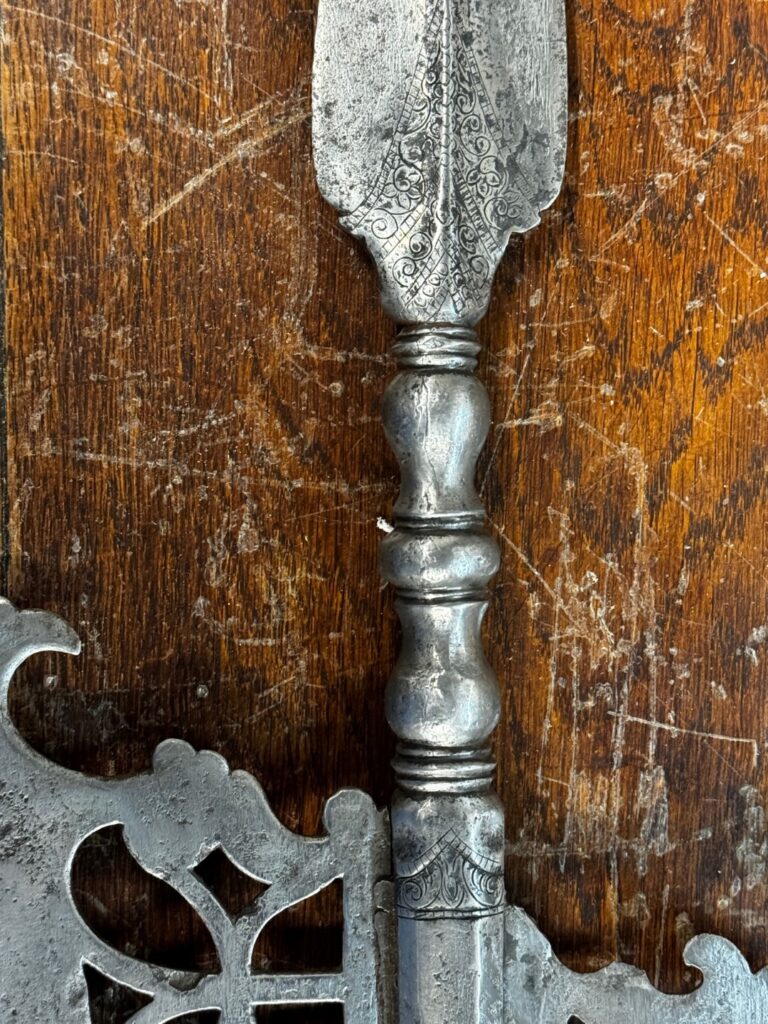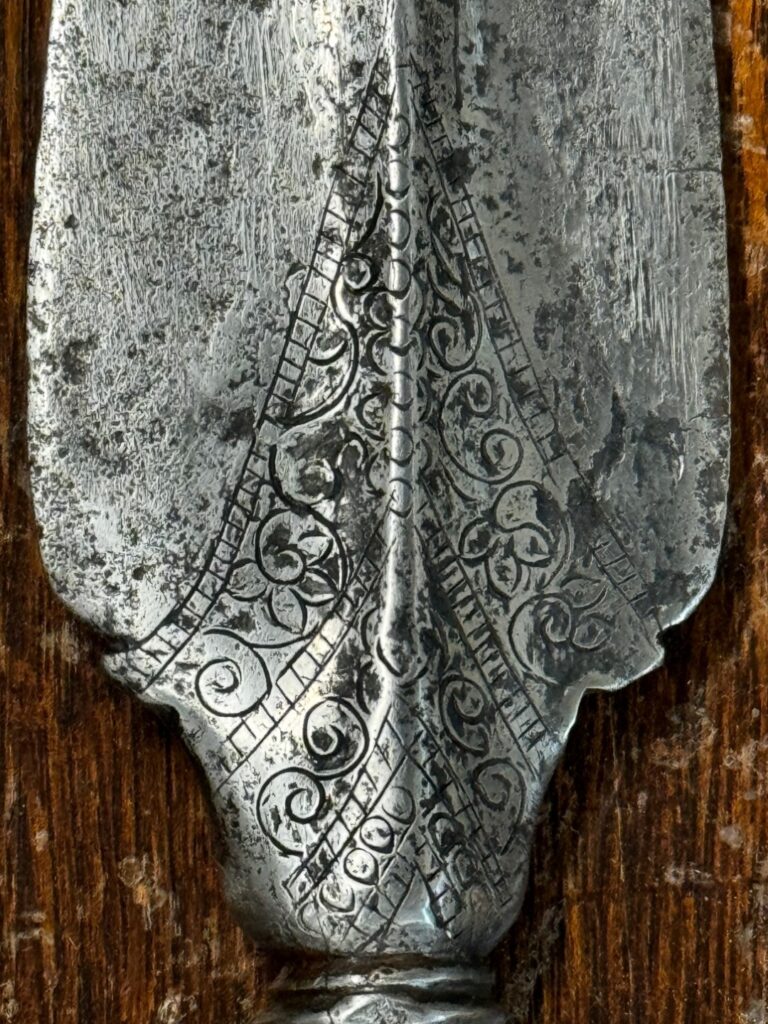1662) BEAUTIFUL SKELETAL ETCHED VENETIAN HALBERD CIRCA 1580: Almost certainly used by a Noble’s guard. Venetian arms and armor are rare and sought after by collectors. They have a certain esoteric look and mystic that arms and armor from the rest of Europe do not have.
Description: Superior
Introduction: By the late 15th century, the halberd had developed into a devastating weapon with three distinct functions. The head of the halberd included: (1) a spear point for thrusting and stabbing, (2) an axe head for chopping and cutting, and (3) a hook or fluke used to pull a rider from his horse or to trip an infantryman. The halberd head was socketed and connected to the pole using two to four langets of approximately 24 inches in length. German and Swiss troops used the halberd into the 17th century. After the early 17th century, they were used as third-line weapons up to the 19th century, which explains why almost all halberd shafts are not original. The halberd was seldom used in Scandinavian countries or Spain.
Discussion: The halberd is a multiuse staff weapon of the Medieval and Renaissance periods. It was used with devastating effects throughout Europe. The halberd was developed in Switzerland and was popular throughout Western Europe. The halberd was responsible for changing warfare in Renaissance/ Medieval Europe. The Medieval and Renaissance periods were very violent and turbulent. After centuries of careful development, battlefield testing, and refinement, weapons were exceptionally well-engineered for maximum efficiency. Soon, the outcome of battles would be dictated in great part by the latest innovations in battlefield weaponry and tactics. A perfect example of this was at the Battle of Morgarten in 1315. Using a newly introduced halberd, the soldiers of the newly created Swiss Confederation rousted the mail-clad superior forces of the Hapsburgs.
The halberd was first called ‚hallembart‚ by the German poet Konrad of Wurzberg (d. 1287), who described a blade attached to a pole utilizing two rings called ‚eyelids in a poem about the Trojan War. It originated between the 6th and 9th centuries in the early Middle Ages. The first halberds were a short sword called a ‚scramasax‚ (see page 313 in my book) attached to a wooden pole. The halberd had reached a more evolved form by the late 13th and 14th centuries. It is mentioned in poetry and contemporary records of the period. In 1348, Franciscan John of Winterthur chronicled the Battle of Morgarten in 1315, where his father fought.
Comparables: A nearly identical example is preserved in the world-famous Museo Poldi Pezzoli in Milan and numerous other museums, including Doge’s Palace in Venice.
Conclusion: This halberd is a great addition to any collection. You are getting a lot of value for the price. Even though not in mint museum condition, it is in good condition and is demonstrative of its warrior past. Priced under 3K for a quick sale.!!!*
All my items come with the following:
–Free shipping.
–10-day review period.
–Certificate of Authenticity.
–Autographed copy of my book.
– If it’s a helmet, a custom wood stand.
– In the event of an international shipment, we will help assign the lowest correct Customs tariff so you pay the least as low as 5% or even nothing.
I believe you will be very pleased.
Contact Me To Get The Latest Lowest Price Possible From The Owner*
